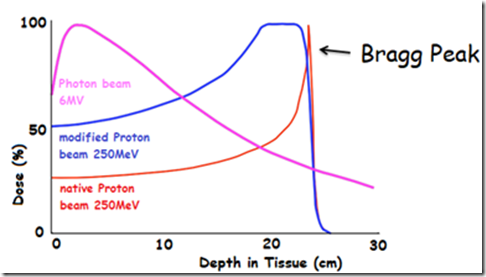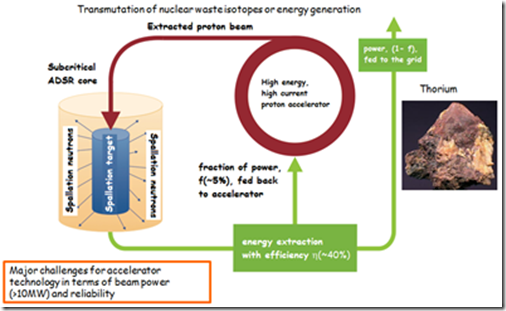How to Build the Biggest and Most Complex Discovery Machines
Applications of Accelerators – APPEAL 9- 30th June 2018
Dr. Suzie Sheehy
John Adams Institute for Accelerator Science
University of Oxford
https://en.wikipedia.org/wiki/Suzie_Sheehy
https://twitter.com/suziesheehy?ref_src=twsrc%5Egoogle%7Ctwcamp%5Eserp%7Ctwgr%5Eauthor
https://www2.physics.ox.ac.uk/contacts/people/sheehy
What are accelerators used for?
A beam of particles is a very useful tool…”
-Accelerators for Americas Future Report, pp. 4, DoE, USA, 2011
About half of the 35,000 accelerators are used for medicine
“A beam of the right particles with the right energy at the right intensity can shrink a tumour, produce cleaner energy, spot suspicious cargo, make a better radial tyre, clean up dirty drinking water, map a protein, study a nuclear explosion, design a new drug, make a heat-resistant automotive cable, diagnose a disease, reduce nuclear waste, detect an art forgery, implant ions in a semiconductor, prospect for oil, date an archaeological find, package a Thanksgiving turkey or… discover the secrets of the universe.”
1. Medical Applications
Around 1/3 of people in the will die from cancer…
But diagnosis is no longer a death sentence!
Reference: Cancer Services Collaborative 2002 www.nhs.uk/npat
X-ray radiotherapy
The whole system rotates through 360 degrees around the patient
External beam radiation therapy uses x-rays, or photons, which are sometimes called “packets of energy,” to treat cancer. The higher the energy of the x-ray beam, the deeper the x-rays penetrate into the target tissue. Linear accelerators produce x-rays at various energies.
The large “L-shaped” design of the linear accelerator allows it to rotate, delivering radiation from all angles. Multiple angles allow the maximum amount of radiation to be delivered to the tumour while delivering a minimal amount of radiation to the surrounding healthy tissue.
Radiation therapy uses high-energy x-rays (ionizing radiation) to stop cancer cells from dividing. A rad is the scientific unit of measure of radiation energy dose. A patient who receives radiation therapy as a treatment for cancer will receive several thousand rads over a very short period of time (weeks or months). A typical x-ray contains far fewer rads. For example, modern mammography systems used to take x-ray images of the breast use approximately 0.1 to 0.2 rad dose per x-ray.
During radiation therapy, x-rays deposit energy in the area being treated, damaging the genetic material of cells and making it impossible for these cells to divide. Although radiation damages both cancer cells and normal cells, the normal cells are usually able to repair themselves and function properly. Like surgery, radiation therapy is a local treatment; it only affects the cells in the treated area. Radiation therapy may be used to treat localized solid tumours, such as cancers of the skin, head and neck, brain, breast, prostate and cervix. Radiation therapy can also be used to treat leukaemia and lymphoma (cancers of the blood-forming cells and lymphatic system, respectively).
http://www.imaginis.com/radiotherapy/how-does-radiation-therapy-work
Radiotherapy access around the world
Many parts of the work lack the equipment and staff
The annual global incidence of cancer is expected to rise from 15 million cases in 2015 to as many as 25 million cases in 2035.
Of these, it is estimated that 65-70% will occur in low-and middle-income countries (LMICs)
“There is a shortfall of more than 5000 radiotherapy machines in low-to-middle income countries, with patients in some countries in Africa and Asia having almost no access to radiation therapy, much less modern technology and expertise” – IAEA, DIRAC
“…as many as 12,600 megavolt-class treatment machines will be needed to meet radiotherapy demands in LMICs by 2035. Based on current staffing models, it was estimated that an additional 30,000 radiation oncologists, more than 22,000 medical physicists and almost 80,000 radiation technologists will be required.”
CERN hosted a workshop on “Design characteristics of a novel linear accelerator for challenging environments”
https://indico.cern.ch/event/560969/sessions/211066/#20161107
Norman Coleman, David Pistenmaa (ICEC), Manjit Dosanjh (CERN)
International Cancer expert corps. & CERN
Taskforces to address the challenge
1) Technology (bury the complexity) (a) near term; (b) longterm
2) Education, training and mentoring
3) Global connectivity and development
https://indico.cern.ch/event/560969
https://home.cern/about/updates/2017/11/combatting-cancer-challenging-environments
Can we make a medical LINAC that is cheaper, more robust, easier to maintain, modular and reliable whilst providing state-of-the-art treatment?
The above picture shows Uganda’s only (now broken) radiotherapy unit
The above picture shows a modern radiotherapy unit
STFC & Global Challenges Research Fund
1) Study of accelerator technology options
2) Robust permanent magnet beam delivery systems
3) RF power systems and optimized RF structures for electron beam acceleration
4) Linear accelerator simulations for stable and sustainable operation of developing country radiotherapy linear accelerators
5) Cloud-based electronic infrastructure in support of LINAC-based radiotherapy in challenging environments
6) Plus a student (L. Wroe, MPhys) independently awarded funding by Laidlaw Scholarship to study failure modes of medical LINACs
Charged Particle Therapy
X-ray peak just under the skin. Protons can be placed better so the cancer gets most and the healthy tissue gets less. More precision required with protons, which is also more costly than X-rays.
https://www.cancer.net/navigating-cancer-care/how-cancer-treated/radiation-therapy/proton-therapy
https://en.wikipedia.org/wiki/Proton_therapy
https://en.wikipedia.org/wiki/Bragg_peak
The Bragg peak is a pronounced peak on the Bragg curve which plots the energy loss of ionizing radiation during its travel through matter. For protons, α-rays, and other ion rays, the peak occurs immediately before the particles come to rest. This is called Bragg peak, after William Henry Bragg who discovered it in 1903.
https://en.wikipedia.org/wiki/William_Henry_Bragg
Sir William Henry Bragg OM KBE PRS (2 July 1862 – 12 March 1942) was a British physicist, chemist, mathematician and active sportsman who uniquely shared a Nobel Prize with his son Lawrence Bragg – the 1915 Nobel Prize in Physics: “for their services in the analysis of crystal structure by means of X-rays”.
Greater dose where needed
Less morbidity for healthy tissue
Less damage to vital organs
Energy loss in materials
Proton therapy
“Hadron therapy” = Protons and light ions
Used to treat localised cancers
Less morbidity for healthy tissue
Less damage to vital organs
Particularly for childhood cancers
Medulloblastoma – affects children. Malignant brain tumour is surgically removed and afterwards, to prevent spread, you want to sterilize the spine with radiation.
A few developments
HEP community can contribute accelerators AND other expertise!
Radioisotope production
Accelerators (compact cyclotrons or linacs) are used to produce radio-isotopes for medical imaging.
7-11MeV protons for short-lived isotopes for imaging
70-100MeV or higher for longer lived isotopes
Positron emission tomography (PET) uses Fluorine-18, half-life of ~110 min
Right: normal metabolic function in the brain
Fluorodeoxyglucose or FDG carries the F18 to areas of high metabolic activity
90% of PET scans are in clinical oncology
Radiopharmaceuticals
2. Industrial accelerators
Electrostatic accelerators are used to deposit ions in semiconductors.
https://cds.cern.ch/record/1005042/files/p95.pdf
Electron beam processing
http://rsccnuclearcable.com/capabilities.htm
Shrinks the film around the turkey
Equipment sterilisation
Food irradiation
By irradiating food, depending on the dose, some or all of the microorganisms, bacteria, viruses or insects present are killed.
Can be used at low doses to: delay food ripening, quarantine treatment
Medium doses are used to reduce microbes & extend the shelf life of meat, poultry and seafood (refrigerated & frozen) and also reduce microorganisms in spices to improve their shelf life. High dose applications: sterilise meat for NASA astronauts
Other uses in industry…
Hardening surfaces of artificial joints
Removal of NOx and SOx from flue gas emissions
Scratch resistant furniture
Around 6 tonnes of topaz are irradiated each year. Almost none of the ‘blue’ topaz you’ll find on the market is natural.
http://www.nrc.gov/reading-rm/doc-collections/fact-sheets/irradiated-gemstones.html
http://www.symmetrymagazine.org/article/october-2009/cleaner-living-through-electrons
3. Synchrotron Light Sources
Synchrotron light sources that have begun operation in last 15 years
Image courtesy of ESRF
Synchrotron radiation is emitted by charged particles when accelerated radially
Produced in synchrotron radiation sources using bending magnets, undulators and wigglers
https://en.wikipedia.org/wiki/Undulator
https://en.wikipedia.org/wiki/Wiggler_(synchrotron)
The choice of magnetic field and oscillatory period affects radiation produced
Altering the undulator gap will vary the harmonic energies.
Wiggler = incoherent but high flux, Undulator = coherent, tunable.
Above right shows an undulator. An undulator is an insertion device from high-energy physics and usually part of a larger installation, a synchrotron storage ring, or it may be a component of a free electron laser. It consists of a periodic structure of dipole magnets.
Synchrotron radiation: microwaves to hard x-rays (user can select)
High flux = quick experiments!
Pulsed structure = resolution of processes down to picoseconds
High Flux: high intensity photon beam, allows rapid experiments or use of weakly scattering crystals;
High Brilliance (Spectral Brightness): highly collimated photon beam generated by a small divergence and small size source (partial coherence);
High Stability: submicron source stability
Polarisation: both linear and circular (with IDs)
Pulsed Time Structure: pulsed length down to tens of picoseconds allows the resolution of process on the same time scale
X-Ray crystallography
2014 was the International Year of Crystallography
For some great overview videos of crystallography, see:
http://www.richannel.org/collections/2013/crystallography
Protein crystallography is a standard technique at synchrotron light sources (Diamond light source has 5 beamlines devoted to it)
https://www.diamond.ac.uk/Home.html
The hardest part is forming the crystal…
Hard condensed matter science
Applied material science
Engineering
Chemistry
Soft condensed matter science
Life sciences
Structural biology
Medicine
Earth and science
Environment
Cultural heritage
Methods and instrumentation
© CCLRC
Diffraction pattern from pea lectin
Synchrotron Radiation Science
Above left: The collection of precise information on the molecular structure of chromosomes and their components can improve the knowledge of how the genetic code of DNA is maintained and reproduced
Above right: X-ray fluorescence imaging revealed the hidden text by revealing the iron contained in the ink used by a 10th century scribe, which had since been erased with lemon juice and written over. This x-ray image shows the lower left corner of the page.
4. Neutron Spallation Sources
Neutrons interact best with particles of a similar size
Metals are transparent as far as neutrons are concerned
https://youtu.be/VESMU7JfVHU?t=21
‘Neutrons tell you where atoms are and what atoms do’
https://en.wikipedia.org/wiki/Spallation
Spallation is a process in which fragments of material (spall) are ejected from a body due to impact or stress.
https://upload.wikimedia.org/wikipedia/commons/1/16/Spallation.gif?download
https://en.wikipedia.org/wiki/Spallation#Nuclear_spallation
Nuclear spallation is one of the processes by which a particle accelerator may be used to produce a beam of neutrons. A particle beam consisting of protons at around 1 GeV are shot into a target consisting of mercury, tantalum, lead or another heavy metal. The target nucleii are excited and upon deexcitation, 20 to 30 neutrons are expelled per nucleus.
Inside the instrument a material will be positioned for investigation. Neutrons travel into the material and are detected when they come out. The directions in which the neutrons emerge tell us about the arrangement of the atoms inside. This is called neutron diffraction. The amount of energy lost by the neutrons as they travel through the material tells us about the atomic dynamics, a technique called neutron spectroscopy.
ISIS Accelerators and Targets
There are also two muon beamlines
https://www.isis.stfc.ac.uk/Pages/home.aspx
H- ion source (17 kV)
665 kV H- RFQ
70 MeV H- linac
800 MeV proton synchrotron
Extracted proton beam lines
Targets
Moderators
Pulsed beam of 800 MeV (84% speed of light) protons at 50 Hz
Average beam current is 230 muA (2.9× 1013 ppp)
184 kW on target (148 kW to TS-1 at 40 pps, 36 kW to TS-2 at 10 pps)
P = 800 (MV) x 230 (mA) = 184 (kW)
Calculating beam power
Power (P) = Work/time = W/T
Work = force x distance = Fd
Force on particle in an electric field (F) = qE
We know the electric field is (voltage/distance) and the protons (charge +1) have gained 800 MeV, so V=800MV.
We also know current (I) = charge/time = q/t
P = 800 (MV) x 230 (mA) = 184 (kW)
Image courtesy ISIS, STFC.
Unblocking oil pipes
Stresses in Airbus A380 Wing
Understanding infant lung structure
5. Energy and Security Applications
Cargo scanning
Materials testing for fusion
Source: IFMIF.org
“deuterium-tritium nuclear fusion reactions will generate neutron fluxes in the order of 1018 m-2s-1 with an energy of 14.1 MeV that will collide with the first wall of the reactor vessel”
International Fusion Material Irradiation Facility (IFMIF)
40 MeV
2 x 125mA linacs
CW deuterons, 5MW each
Beams will overlap onto a liquid Li jet
To create conditions similar to in a fusion reactor
To de-risk IFMIF, first a test accelerator ‘LIPAc’ is being built
Installation of ‘LIPAc’ test accelerator has started in Japan
Accelerator Driven Systems
Thorium is 3 times as abundant on earth and we use all of it (not 0.71% like uranium)
Fertile not fissile, add neutrons from accelerator to create U233 (fissile)
6. Historical and cultural applications
Radiocarbon Dating
1) As plants uptake C through photosynthesis, they take on the 14C activity of the atmosphere.
2) Anything that derives from this C will also have atmospheric 14C activity (including humans).
3) If something stops actively exchanging C (it dies, is buried, etc), that 14C begins to decay.
Accelerators can study art
http://www.javno.com/en-bestseller/van-gogh-first-victim-of-particle-bombarding_185316
By directing synchrotron radiation onto 0.5 square mm ‘pixels’, it was possible to produce X-ray fluorescence intensity maps, reflecting the distribution of specific elements in the paint layers. In particular, the distribution of Hg mercury (red pigment) and Sb antimony (yellow pigment) allowed a reconstruction of the underlying image to be made.
Accelerators can help spot art forgeries
An ion beam (usually, though not exclusively, protons) with MeV energy is directed onto the surface. A variety of backscattered radiation can give a detailed analysis of the atoms present in the surface.
Accelerators in archaeology
Accelerators can make food taste better
Finally, just one more application…
Next time someone asks you what accelerators are for…
“A beam of the right particles with the right energy at the right intensity can shrink a tumour, produce cleaner energy, spot suspicious cargo, make a better radial tire, clean up dirty drinking water, map a protein, study a nuclear explosion, design a new drug, make a heat-resistant automotive cable, diagnose a disease, reduce nuclear waste, detect an art forgery, implant ions in a semiconductor, prospect for oil, date an archaeological find, package a Thanksgiving turkey or…
…discover the secrets of the universe.”
-Accelerators for Americas Future Report, pp. 4, DoE, USA, 2011
Source (2007): http://www.worldscientific.com/worldscibooks/10.1142/6272





















































Hi, did you make the Spallation diagram you used after “The target nucleii are excited and upon deexcitation, 20 to 30 neutrons are expelled per nucleus.” If not, do you still have the source for where you got it? I haven’t seen it elsewhere.
This is one of the best diagrams I have seen for spallation and I’d like to use it in a presentation.
Thank you!
LikeLike
I’m really sorry but I can’t remember the source. I would have been given permission to use it but I can’t remember from whom.
LikeLike
Okay, thank you, I’ll just cite you 🙂
LikeLike